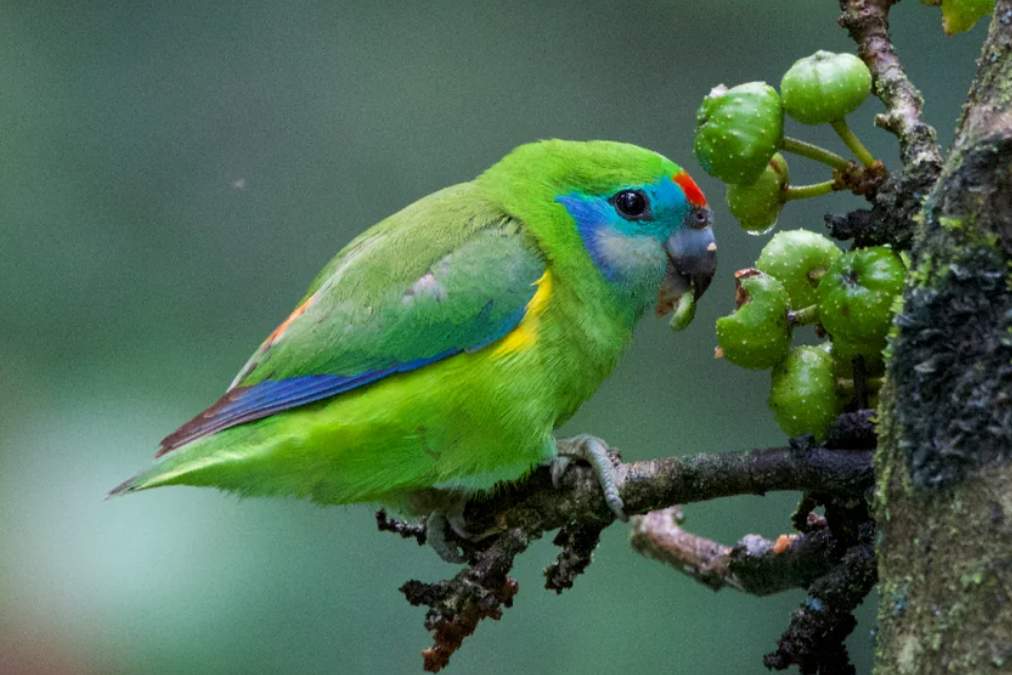Australian boobook (Ninox boobook) or mopoke is the smallest and most abundant of the owls in Australia. It is also known as, Southern Boobook, Spotted Owl, Boobook Owl, and Mopoke. This species can live in all types of habitats, from dense forests to deserts, as well as in cities and suburbs with a large number of trees.
Nesting and breeding take place between August and January. Each season, there is only one brood. It is nested in a hollow 50-250 cm deep in a living or dead tree, 3-25 m above ground. The male cleans and prepares the nest with wood chips, leaves, and twigs.
Despite its rarity, its characteristic call is the only indication of its presence. Generally, boobooks are nomadic and roost during the day in the dense foliage of trees, but they can sometimes be found in caves when trees are scarce. One is usually only seen one bird roosting at a time, though they live in pairs. When birds are feeding locally, they usually occupy a territory of up to ten hectares with a number of roosts.
Read More – What Makes Owls So Wonderful

Australian boobooks don’t fly off when people walk by. Birds sit bolt-upright when they sense an intruder approaching, their feathers pressed against their bodies. Once it is turned sideways, it appears very slender and long. Roosting boobooks are often discovered by the persistent mobbing calls of other birds.
Boobooks eat birds up to the size of a House Sparrow, as well as small mammals, particularly the House Mouse Mus musculus. Unlike other Australian owls, they also consume more invertebrates, including night-flying beetles and moths. It has even been observed that they catch large moths flying around street lights.
When they bathe and feed, they do so during the first few hours after dusk. A boobook pair establishes its nesting territory with territorial hooting after dusk and before dawn, especially during the breeding season. As with other Ninox owls, mated pairs court on perches, nibbling and preening each other while bubbling, purring, nibbling, and preening.
They have not yet been able to determine whether they will pair permanently. New Zealand Boobooks “Ninox novaeseelandiae” is often considered to be related to Southern Boobooks, which can also be found on Lord Howe Island and Norfolk Island. There are some similarities between Southern Boobooks and New Zealand owls in terms of their cryptically toned plumages, but they are very different in shape: their tails are much stubbier, and their wings are more tapered.
Australian boobooks measure about 250-350 mm long. Adults: Both sexes are similar; females are slightly larger, with a darker back, more streaking ventrally, and sometimes a whiter head. According to geographical race, the upper parts of the body are pale to dark brown; shoulders and backs are usually white. A dull-barred light brown and dark brown pattern is found on the flight feathers and tail.
A dull white underpart is mottled and streaked with pale to dark brown coloration. Facial disc indistinct, usually much duskier than body color, with distinct white frons.Yellow eyes. The bill and cere are blue-grey, with black tips. In Tasmania, the toes are pale leaden to white or yellow; the claws are black. Similar to adults, but paler and more streaked and spotted as they mature. The Downy Young is white-downed, with powder blue eyes.
A two-syllable territorial hoot given by both sexes from set perches, boo-book, mo-poke, or more-pork, carries a kilometer or more and is given by both sexes to one another through closed bills. Additionally, low-trilling calls and aggressive screams are heard. An immature begs with a whistling trill reminiscent of a cricket.
There are two, three, or four eggs laid by Australian boobooks. They lay two to three eggs each night. There are round white eggs measuring 40-40 x 35 mm with a plain white color. It takes about 26-33 days for the female to lay her first egg, beginning at the time she lays her first egg. A male brought food outside the nest for the female to eat. During the first five to six weeks of life, the fledged chicks are fed by both parents, along with other ‘helper’ adults.
All wooded habitats of Australia, including Tasmania, as well as in New Guinea and the Timar-Banda Sea, are home to this species. It was unsuccessfully introduced on Lord Howe Island. Four
Australian races: A large, rather deep brown bird in eucalypt forests and woods of the east coast north to the foot of Cape York Peninsula, and west to far fringes of the Great Dividing Range, the Mt Lofty-Flinders Ranges, and Kangaroo Island.
One small and pale rufous to sandy-brown throughout the remainder of the mainland and north coast islands;
Last but not least is a very dark chocolate with a plain back and dull spotting on the ventrally, in and on the edges of rainforest in northeastern Queensland. The first is a small, moderately dark, and extensively spotted white over the head and back; the second is a darker chocolate with a bland back and spotted white over the head and back.
The Tasmanian race has migrated to the mainland in the past.
Also, Read – Eurasian Pygmy Owl (Glaucidium passerinum)







